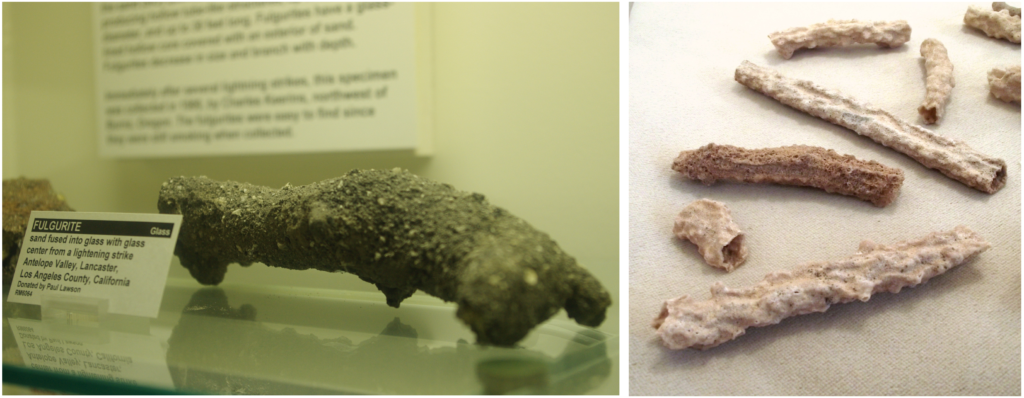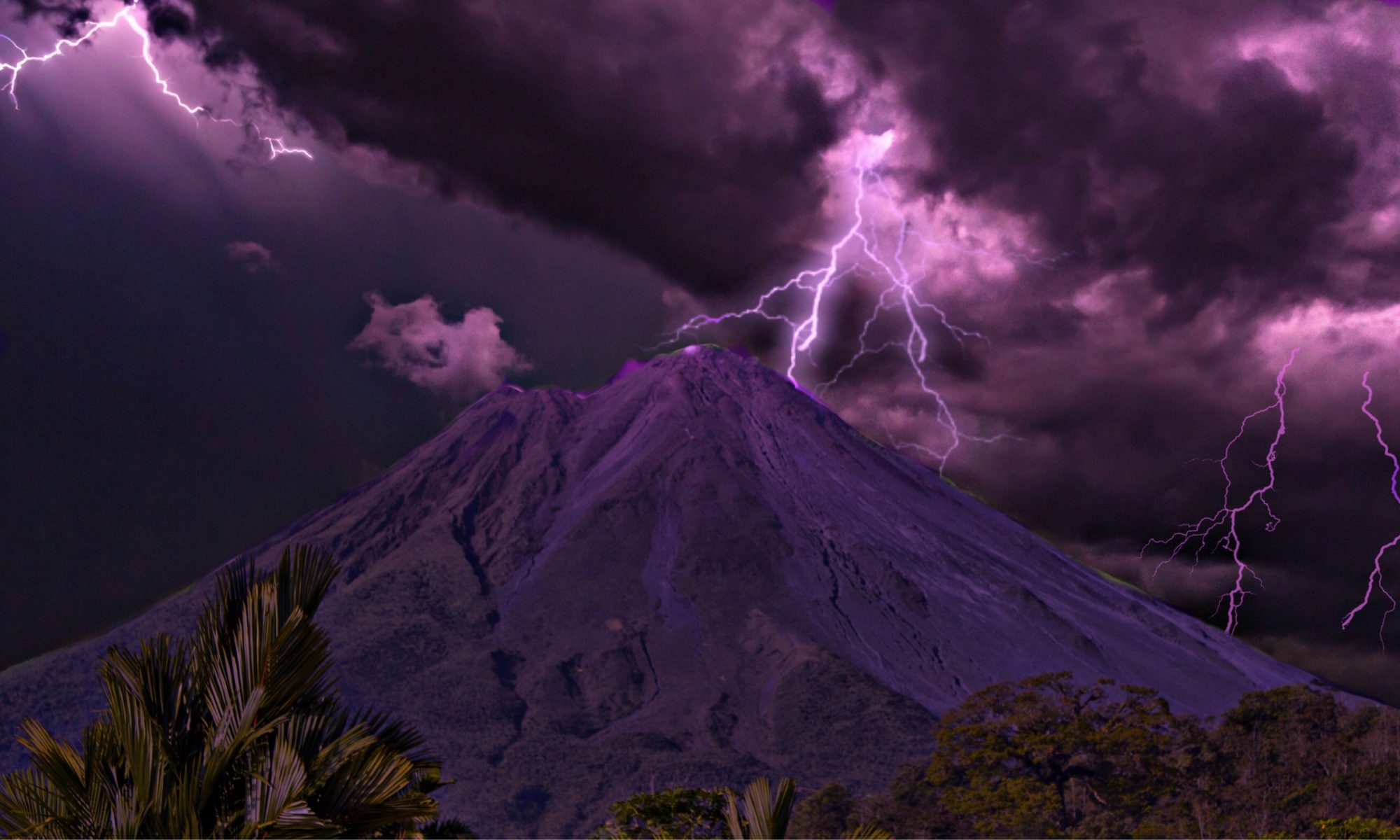Paper: Lightning-induced weathering of Cascadian volcanic peaks
Authors: Jonathan M. Castro, Franziska Keller, Yves Feisel, Pierre Lanari, Christoph Helo, Sebastian P. Mueller, C. Ian Schipper, Chad Thomas
The bright flashes followed by the loud thunderclaps of large storms are inherently transient, but a recent study by Castro et al proposes a new approach to investigating the history of storm activity and extreme weather events on Earth: through fossilized lightning strikes, or fulgurites.
The term fulgurite is derived from the Latin fulgur, which means lightning. Specifically, fulgurites form when lightning strikes rock, sand, or soil. This action superheats the ground, melting and fusing the preexisting material to often form hollow, tubular, glass-like materials. Their overall shape likely traces the pathway of the lightning on and/or beneath the Earth’s surface. Any water present in the preexisting material is vaporized during this process, leaving behind a moisture-free, dry fulgurite at the time of formation. This means that any water (or hydrous species, OH) found in fulgurites must have been added after the time of the lightning strike, as they are exposed to atmospheric water that gradually diffuses back into the lightning-fused material.
While fulgurites form naturally, they are technically not minerals but rather mineraloids: unlike true minerals, they have an amorphous crystal structure, and their composition varies depending on the material that gets hit by lightning. Broadly, three fulgurite types have been identified in Earth’s rock record: sand fulgurites, clay fulgurites, and rock fulgurites. Of the three types, rock fulgurites are the least common. They are generally limited to the peaks of mountains like the Cascades, Alps, and Andes, where high summits act as natural lightning rods.

In a recent study, Jonathan Castro and coauthors documented the effect of lightning on volcanic peaks and the production of rock fulgurites at South Sister and Mt. Shasta volcanoes in the Cascade Range, western USA. The authors used igneous rock fragments from the summit of South Sister volcano in experiments which aimed to recreate the conditions of fulgurite formation in the lab. They heated the rock fragments up to ~18,000oF (~9700oC) over a timescale of 200-300 milliseconds using a modified arc welder. The chemical compositions and hydration features of the experimental fulgurites were then compared to natural fulgurite samples.
In both the natural and lab-produced fulgurites, the superheating chemically homogenized the target materials. Also, both the natural and lab-produced fulgurites were relatively depleted in H2O compared to volcanic glass, consistent with the inference that lightning can dehydrate the target rock.
Building on these experimental results, Castro et al compared the hydration profiles of natural fulgurites from South Sister with experimental observations to constrain the amount of time that had passed since the natural fulgurites were formed. Following their formation, fulgurites are exposed to Earth’s elements, and over time, will start to hydrate again. The fulgurites from South Sister were estimated to be decades to centuries old based on measurements and modelling of the distribution of OH within their structure.
The work of Castro et al is the first to demonstrate that fulgurites could be used to constrain the timing of historic weather events on Earth. While some of the input parameters used to model the age of fulgurites are still uncertain, these results provide a proof-of-concept that paves the way for future studies of paleoweather and short-term climatic changes across volcanic and mountainous landscapes.

When Lightning Strikes! Fulgurite Formation and Earth’s Weather by Claire McLeod is licensed under CC BY-SA 4.0

